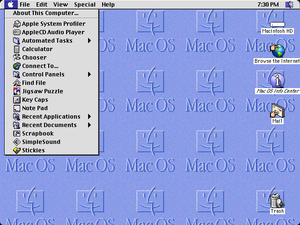How I Can See The Source Code For Email Mac
If so, does this issue happen to signatures set to other email accounts? Regards, Steve Fan Please remember to mark the replies as answers if they helped. Outlook for mac 2017 signatures on all email account. Hi, In order to fix the issue more efficiently, I'd like to clarify the following questions: Does this issue happen on the sender side or on the recipient side? Does this issue happen to newly created signatures in Outlook? Do you have multiple email account set up in Outlook for Mac?
Underneath all the beautiful images, perfect typography, and wonderfully placed calls to action lies your webpage source code. This is the code your browser turns into delightful experiences for your visitors and customers on a daily basis. Google and other search engines “read” this code to determine where your webpages should appear in their indexes for a given search query. So, a lot of SEO comes down to what’s in your source code. This is a quick guide to show you how to read your own website source code in order to make sure it’s properly SEO-ed and, really, to teach you how to sanity check your SEO efforts. I also will go over a few other situations where knowing how to view and examine the right parts of source code can help with other marketing efforts.

Finally, if you’re paying someone to SEO your site, this is a great guide to help you keep tabs on them! How to View Source Code The first step in checking your website’s source code is to view the actual code. Every web browser allows you to do this easily.
After clicking View Source, a text document will be opened immediately with the source code of the html email body displaying inside. View source code of html email body in Outlook 2007 In Outlook 2007, you can do as follows to view the source code. I know how to view the headers of an email message as well as the source of an HTML message.In Outlook Express, however, there was an option to see the entire message source code the exact same way it was received (i.e. Headers and any plain-text and/or HTML message parts in the body).
Below are the keyboard commands for viewing your webpage source code for both PC and Mac. PC • Firefox – CTRL + U (Meaning press the CTRL key on your keyboard and hold it down. While holding down the CTRL key, press the “u” key.) Alternatively, you can go to the “Firefox” menu and then click on “Web Developer,” and then “Page Source.” • Internet Explorer – CTRL + U. Or right click and select “View Source.” • Chrome – CTRL + U.
Or you can click on the weird-looking key with three horizontal lines in the upper right hand corner. Then click on “Tools” and select “View Source.” • Opera – CTRL + U. You also can right click on the webpage and select “View Page Source.” Mac • Safari – The keyboard shortcut is Option+Command+U. You also can right click on the webpage and select “Show Page Source.” • Firefox – You can right click and select “Page Source” or you can navigate to your “Tools” menu, select “Web Developer,” and click on “Page Source.” The keyboard shortcut is Command + U. • Chrome – Navigate to “View” and then click on “Developer” and then “View Source.” You also can right click and select “View Page Source.” The keyboard shortcut is Option+Command+U. Once you know how to view the source code, you need to know how to search for things in it.